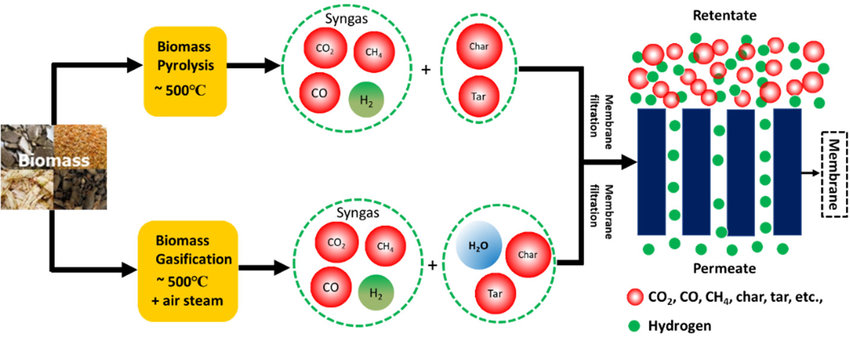Biomass gasification is a well-established technological process that converts biomass into hydrogen and other products without burning through a regulated process including heat, steam, and oxygen. The net carbon emissions of this approach can be minimal since growing biomass absorbs carbon dioxide from the atmosphere; this is especially true if carbon capture, use, and storage are combined with the method over an extended period of time. Biofuels gasification plants are now under construction and operation; these facilities offer valuable insights and best practices for producing hydrogen.
What’s Meant by Biomass?
Agricultural crop leftovers (like maize Stover or wheat straw), forest residues, special crops developed especially for energy consumption (like switch grass or willow trees), organic municipal solid trash, and animal wastes are all included in biomass, a sustainable organic resource. By gasifying this renewable resource, hydrogen and other byproducts can be produced.
How Does Gasification of Biomass Occur?
Gasification is a process that produces carbon monoxide, hydrogen, and carbon dioxide from organic or fossil-based carbonaceous materials at high temperatures (>700°C) without combustion and with a regulated amount of oxygen or steam. The carbon monoxide then undergoes a water-gas shift reaction with the water to produce carbon dioxide and more hydrogen. The hydrogen in this gas stream can be extracted using absorbers or specialized membranes.
Example reaction that is simplified
C6H12O6 + O2 + H2O → CO + CO2 + H2 + other species
Note: Glucose is used in place of cellulose in the process above. Cellulose is one of the main components of actual biomass, which has a very varied composition and complexity.
Reaction of water-gas shift
CO + H2O → CO2 + H2 (+ small amount of heat)
Gasifying biomass without oxygen is known as pyrolysis. Generally speaking, biomass does not gasify as quickly as coal and, in the gas mixture that leaves the gasifier, it creates more hydrocarbon compounds; this is particularly true in the absence of oxygen. Because of this, it usually takes an additional step to reform these hydrocarbons using a catalyst in order to produce a pure syngas combination of carbon dioxide, hydrogen, and monoxide. The carbon monoxide is then converted to carbon dioxide via a shift reaction stage (using steam), much like in the gasification process used to produce hydrogen. After that, the hydrogen is separated and refined.

What Justifies the Consideration of This Path?
In our country, biomass is a plentiful resource.
Particularly plentiful and home, biomass has the power to completely change the way we think about sustainable energy. Biomass, which consists of organic components from both plants and animals, provides a readily available and replenish able supply of raw materials for a variety of uses on a local level. Unlike limited fossil fuels that are influenced by geopolitical unpredictability, biomass resources are naturally domestic since they are widely dispersed over several locations. By lowering reliance on imported fuels and promoting resilience in the face of supply chain disruptions, this trait helps to ensure energy security. Whether it comes from wood waste, organic municipal trash, or agricultural residues, biomass is a flexible and sustainable feedstock. In addition to addressing resource scarcity concerns, the abundance of biomass offers nations a chance to harness local resources for energy production, promoting economic growth and mitigating the environmental effects of long-distance resource transportation.
Carbon dioxide is “recycled” by biomass.
As part of their normal development process, plants absorb carbon dioxide from the environment as they produce biomass. This process balances the carbon dioxide emitted during the gasification of biomass, which leads to minimal net greenhouse gas emissions.
Study Is Applied to Overcoming Obstacles
Purification and Separation of Hydrogen
To obtain high-purity hydrogen, the syngas stream must be efficiently separated from and purified into hydrogen. In order to improve purifying effectiveness and lower energy usage, researchers are looking at membrane technologies, adsorption procedures, and other innovative separation strategies.
Environmental Impact and Lifecycle Assessment
It is important to assess the complete lifespan of hydrogen generation from biomass. In order to increase the overall sustainability of the technology, researchers are carrying out thorough life cycle studies to comprehend the environmental effect of the process, including greenhouse gas emissions.
The experts such as KERONE with the team of experts can help with the best suited for production of hydrogen from biomass for your process need.
